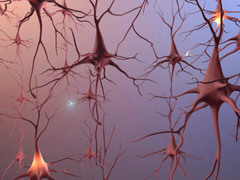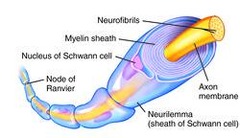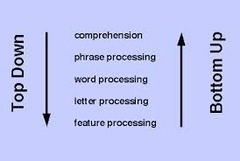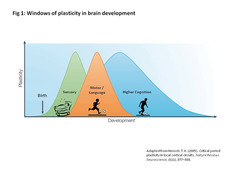"Educational Psychology; Active Learning Edition" by Anita Woolfolk – Flashcards
Unlock all answers in this set
Unlock answersquestion
Differentiated instruction
answer
Matching instruction to meet the different needs of learners in a given classroom, (P.g 10).
question
Reflective teachers...
answer
...think back over situations to analyze what they did and why, and to consider how they might improve the learning of their students, (P.g 9).
question
Teachers' sense of efficacy
answer
a teacher's belief that he or she can reach even the most difficult students and help them learn, (P.g 5).
question
What is NCLB?
answer
No Child Left Behind Act of 2002. Requires standardized achievement testing in reading and mathematics every year in grades 3-8, and in h. school. Science is tested once in each grade span, elem, mid, and high, (P.g 12).
question
"The teacher-student relationship in kindergarten predicts...
answer
...a number of academic and behavioral outcomes", (P.g 7).
question
A positive teacher-student relationship is fostered when teachers are...
answer
"sensitive to...[student]... needs and provide frequent, consistent feedback", (P.g 7).
question
Educational Psychology
answer
a distinct discipline with its own theories, research methods, problems and techniques, (P.g 14, restated P.g 23).
question
What do Educational Pschologists do?
answer
They conduct research on learning and teaching and at the same time, work to improve educational practice, (P.g 14).
question
Descriptive Studies
answer
Studies that collect detailed information about specific situations, often using observation, surveys, interviews, recordings, or a combination of these methods, (P.g 16).
question
Ethnography
answer
a descriptive approach to research that focuses on life within a group and tries to understand the meaning of the events to the people involved, (P.g 16).
question
Participant Observation
answer
A method for conducting descriptive research in which the reseacher becomes a participant in the group being observed.
question
Case Study
answer
Intensive study of one person or situation, (P.g 16).
question
Correlation
answer
statistical descriptions of how closely two variables are related, (P.g 16).
question
Positive Correlation
answer
A relationship between two variables in which both variables either increase or decrease together, (P.g 17).
question
Negative Correlation
answer
A relationship between two variables in which one variable increases when the other decreases, (P.g 17).
question
Experimentation
answer
The study of cause and effect; research method in which variables are manipulated and the effects recorded, (P.g 17).
question
Quasi-experimental studies
answer
Studies that fit most of the criteria for true experiments, with the important exception that the participants/subjects are not assigned to groups at random. Instead, existing groups such as classes or schools participate, (P.g 17).
question
Statistical Significance
answer
Not likely to be a chance occurance
question
Correlations Range from...
answer
1.00 to -1.00; the closer the correlation to 1 or -1, the stronger it is.
question
Correlation does not equal...
answer
Causation
question
What does this mean? p < 0.05
answer
In this study, the probability of the result reported could happen by chance less than 5 times out of a hundred.
question
Single Subject Experimental Studies
answer
Systematic interventions to study effects with one person, often by applying then withdrawing treatment; ABAB experiment, (P.g 18).
question
Microgenic Studies
answer
Detailed observation and analysis of changes in cognitive process as the process unfolds over a several-day, or several-week period of time, (P.g 18).
question
Action Research
answer
Research carried out by educators in their own classrooms or schools to improve the learning of their students.
question
Longatudinal Studies
answer
observing subjects over many years as changes occur
question
Cross-sectional
answer
focusing research on groups of children at different ages
question
The NCLB act says that educational programs and practices receiving federal money have to be consistent with...
answer
...scientifically based research, (P.g 20).
question
Scientifically Based Reseach as defined by NCLB act:
answer
1) Uses observations and experiments to systematically gather valid and reliable data. 2) Involves rigorous and appropriate procedures for analyzing data. 3) Is clearly described so that it can be repeated by others. 4) Has been rigorously reviewed by appropriate, independant experts
question
Principle
answer
Established relationship between factors, (P.g 20).
question
Theory in Science
answer
Integrated statement of principles that attempt to explain a phenomenon and make predictions, (P.g 20).
question
Hypothesis
answer
a prediction of what will happen in a research study based on theory and previous research, (P.g 20).
question
Evidence Based Practice (EBPP)
answer
Practices that integrate the best available research with the insights of expert practitioners and knowledge of characteristics, culture, and preferences of the client, (P.g 20).
question
Empirical Analysis
answer
Analysis based upon systematically collected data, (P.g 22).
question
Development
answer
Orderly, adaptive changes we go through between conception and death that remain for a reasonably long period of time, (P.g 34).
question
Physical Development
answer
Changes in body structure and function over time, (P.g 34).
question
Personal Development
answer
Changes in personality that take place as a person grows, (P.g 34).
question
Social Development
answer
Changes over time in the way we relate to others, (P.g 34).
question
Cognitive Development
answer
Gradual, orderly changes by which mental processes become more complex and sophisticated, (P.g 34).
question
Maturation
answer
Genetically programmed, naturally occurring changes over time, (P.g 34).
question
Currant views on the source of development emphasize...
answer
...complex coactions (joint actions) of nature and nurture" (P.g 35).
question
Qualitative (quality) Discontinuous Change
answer
development that occurs in distinct steps or stages, (P.g 35).
question
Quantitative (quantity) Continuous Change
answer
gradual development in which achievements at one level build on those of previous levels, (P.g 35).
question
Sensitive Periods
answer
Times when a person is especially ready for or responsive to certain experiences, (P.g 35).
question
3 General Principles of Development
answer
1)People develop at different rates, 2)Development is relatively orderly, 3)Development takes place gradually
question
Functional magnetic resonance imaging (fMRI)
answer
measures brain activity by detecting changes associated with blood flow, (P.g 37).
question
Event-related potential (ERP)
answer
measures brain activity by detecting the electrical activity of the brain through the skull or scalp, (P.g 37).
question
Positron emission tomography (PET)
answer
A method of localizing and measuring brain activity using computer assisted motion pictures of the brain, (P.g 37).
question
Neurons
answer
Nerve cells that store and transfer information; the gray matter of the brain (P.g 37).
question
Neurogenesis

answer
The production of new neurons. This occurs into adulthood (P.g 37).
question
Synapses
answer
The tiny space between neurons --chemical messages are sent across these gaps, (P.g 37).
question
Glial cells
answer
Cells in the nervous system that support, nourish, and protect neurons. It's the white matter of the brain which greatly outnumbers neurons, (P.g 37-38).
question
Myelination

answer
The process by which neutral fibers are coated with a fatty sheath called myelin that makes message transfer more efficient, (P.g 38).
question
experience-expectant
answer
when synapses are overproduced in certain parts of the brain during specific developmental periods, awaiting (expecting) stimulation, (P.g 38).
question
experience-dependent
answer
synaptic connections are formed based on an individual's experiences, like trying to learn a second language (P.g 38).
question
Cerebral Cortex
answer
The part of the brain where information processing takes place. Divided into four lobes, (P.g 39).
question
Lateralization
answer
The specialization of the two hemispheres of the brain cortex. One hemisphere is more efficient than the other in performing certain functions, (P.g 40).
question
"No mental activity is exhaustively the work of...
answer
...a single part of the brain --so there is no such thing as a "right brained student" unless the left hemisphere has been lopped off, (P.g 40).
question
Plasticity
answer
The brain's tendency to remain somewhat adaptable or flexible, (P.g 40).
question
adolescents' have high horsepower but...
answer
...poor steering. Much like adults in low stress situations, but impulsive and risk taking in high stress situations, (P.g 40-41).
question
Neuroimaging and other brain monitoring systems used for reading research offer...
answer
...suggestive rather than completely empirical links between how the brain learns..., (P.g 43).
question
Learning will be more effective if educators help to...
answer
...minimize stress and fear at school, teach emotional regulation strategies, teach a positive learning environment and motivate students, (P.g 43).
question
There are multiple ways to both teach and...
answer
...learn a skill, depending on the student, (P.g 45).
question
Learners are likely to have preferred modes of processing as well as...
answer
...varying capabilities in these modes, (P.g 45).
question
The brain can change, but it takes time, so teachers must be...
answer
...consistent, patient, and compassionate in teaching and reteaching in different ways, (P.g 46).
question
Information that is not linked to existing knowledge..
answer
...will be easily forgotten. Therefore teachers should tie in new information to what students already understand, (P.g 46).
question
So students can build enduring, useful, knowledge categories...
answer
...general concepts should be emphasized over small specific facts, (P.g 46).
question
Social Transmission
answer
The transfer or spread of information, throughout a group of people, (P.g 49).
question
Organization
answer
ongoing process of arranging information and experience into mental systems or categories, (P.g 49).
question
Adaptation
answer
Ajustment to the environment, (P.g 49).
question
Schemes
answer
Mental systems or categories of perception and experience, (P.g 49).
question
Assimilation
answer
Fitting new experiences into existing mental schemas, (P.g 49).
question
Accommodation
answer
Altering existing schemes or creating new ones in response to new information, (P.g 49).
question
Equilibration
answer
search for mental balance between cognitive schemes and information from the environment, (P.g 49).
question
Disequilibrium
answer
The "out of balance" state that occurs when a person realizes that his or her currant ways of thinking are not working to solve a problem or understand a situation, (P.g 50).
question
Sensorimotor
answer
Involving the senses and motor activity
question
Object permanence
answer
The understanding that objects have a separate, permanent existance, (P.g 50).
question
Sensorimotor Stage
answer
0-2 yrs; learns through reflexes, senses, movement. Begins to imitate others, remember events and initiate intentional activity, (P.g 51).
question
Preoperational Stage
answer
2-7 yrs; develops language, uses symbols to represent objects, thinks i. present, has difficulty understanding other points of view, (P.g 51).
question
Concrete Operational Stage
answer
7-11 yrs; can think logically about hands on problems, organizes into categories. Can reverse thinking to undo actions. Understands past, present, and future, (P.g 51).
question
Formal Operational Stage
answer
11+ years; thinks hypothetically and deductively. Solves abstract problems logically. Considers multiple perspectives. Develops concerns about social issues, personal identity and justice, (P.g 51).
question
Absece Seizure
answer
A seizure involving only a small part of the brain that causes a child to lose contact briefly.
question
Academic Language
answer
The entire range of language used in elementary, secondary, and university-level schools including words, concepts, strategies, and processes from academic subjects.
question
Academic Learning Time
answer
Time when students are actually succeeding at at the learning task.
question
Academic Tasks
answer
The work the student must accomplish, including the product expected, resources available, and the mental operations required.
question
Accountable
answer
Making teachers and schools responsible for student learning, usually by monitoring learning with high-stakes tests.
question
Achievement Tests
answer
Standardized tests measuring how much students have learned in a given content area.
question
Acronym
answer
Technique for remembering by using the first letter of each word in a phrase to form a new memorable word.
question
Action Zone
answer
Area of a classroom where the greatest amount of interaction takes place.
question
Active Teaching
answer
Teaching characterized by high levels of teacher explanation, demonstration, and interaction with students.
question
Adaptive Teaching
answer
Provides all the students with challenging instruction and uses supports when needed, but removes these supports as students become able to handle more on their own.
question
Adequate Yearly Progress (AYP)
answer
Objectives for yearly improvement for all students and for specific groups such as students from major ethnic and racial groups, students with disabilities, students from low-income families, and students whose English is limited, (P.g 12).
question
Adolescent Egocentrisim
answer
The assumption that everyone else shares ones thoughts, feelings, and concerns.
question
Advance Organizer
answer
Statement of inclusive concepts to introduce and sum up material that follows; a statement that warns the audience that important information is to follow.
question
Affective Domain
answer
Objectives focusing on attitudes and feelings; the area of learning that involves attitudes, values, and emotions.
question
Algorithim
answer
Step-by-step procedure for solving a problem; a prescription for solutions.
question
Allocated Time
answer
Time set aside for learning.
question
Americans with Disabilities Act of 1990 (ADA)
answer
Federal legislation prohibiting discrimination against persons with disabilities in employment, transportation, public access, local government, and telecommunications.
question
Analogical Thinking
answer
Heuristic in which one limits the search for solutions to situations that are similar to the one at hand.
question
Anorexia nervosa
answer
An eating disorder characterized by very limited food intake.
question
Antecedents
answer
Events that precede an action.
question
Anxiety
answer
General uneasiness, a feeling of tension.
question
Applied Behavior Analysis
answer
The application of behavioral learning principles to understand and change behavior.
question
Appropriating
answer
Being able to internalize or take for yourself knowledge and skills developed in interaction with others or with cultural tools.
question
Argumentation
answer
The process of debating a claim with someone else.
question
Arousal
answer
Physical and psychological reactions causing a person to feel alert, attentive, wide-awake, excited or tense.
question
Articulation Disorders
answer
Any of a variety of pronunciation difficulties, such as substitution, distortion, or omission of sounds. Ex: Stuttering
question
Assertive Discipline
answer
Clear, firm, un-hostile response style.
question
Assessment
answer
Procedures used to obtain information about student performance.
question
Attention
answer
Focus on a stimulus.
question
Attention-deficit hyperactivity disorder (ADHD)
answer
Currant term for disruptive behavior disorders marked by overactivity, excessive difficulty sustaining attention, or impulsiveness.
question
Attribution Theories
answer
Descriptions of how individuals' explanations, justifications, and excuses influence their motivation and behavior.
question
Authentic Assesments
answer
Assessment procedures that test skills and abilities as they would be applied in real-life situations.
question
Authentic Task
answer
Tasks that have some connection to real-life problems the students will face outside the classroom.
question
Autisim/ Autisim spectrum disorder
answer
Developmental disability significantly affecting verbal and nonverbal communication and social interaction, generally evident before age 3 and ranging from mild to major.
question
Automated Basic Skills
answer
Skills that are applied without conscious thought.
question
Automaticity
answer
The ability to preform thoroughly learned tasks without much mental effort.
question
Availability Heuristic
answer
Tendency to estimate the probability of certain events in terms of how readily they come to mind.
question
Balanced Bilingualism
answer
Adding a second language capability without losing your heritage language.
question
Basic Skils
answer
Clearly structured knowledge that is needed for later learning and can be taught step-by-step.
question
Behavioral Modification
answer
shaping behavior through rewards and punishments
question
Behavioral Learning Theories
answer
Explanations of learning that emphasize observable changes in behavior.
question
Behavioral Objectives
answer
Instructional objectives stated in terms of observable behaviors.
question
Being Needs
answer
Maslow's three higher level needs, sometimes called growth needs.
question
Maslow's Hierarchy of needs
answer
(base to top) Physical needs, security needs, social needs, esteem needs, self actualization needs
question
Belief Perseverance
answer
The tendency to hold onto beliefs, even in the face of contradictory evidence.
question
Bilingual
answer
Speaking two languages and dealing appropriately with two different cultures.
question
Bioecological model - Bronfenbrenner's Theory
answer
describes the nested social and cultural contexts that shape development.
question
Microsystem
answer
the people and objects in an individual's immediate environment
question
Mesosystem
answer
in the bioecological model, the interconnections among immediate, or microsystem, settings.
question
Exosystem
answer
Societal institutions (government, community, schools, place of worship, and local media)
question
Macrosystem
answer
consists of cultural values, laws, customs, and resources
question
Chronosystem
answer
In Bronfenbrenner's bioecological model, changes in ecological systems that are caused by time.
question
Blended Families
answer
Parents, children, and stepchildren merged into families through remarriages.
question
Body Mass Index (BMI)
answer
A measurement that allows you to assess your body size, taking your height and weight into account.
question
Bottom-up Processing

answer
Perceiving based on noticing separate defining features and assembling them into a recognizable pattern.
question
Brainstorming
answer
Generating ideas without stopping to evaluate them.
question
Bulimia
answer
Eating Disorder characterized by overeating, then getting rid of the food by self-induced vomiting or laxatives.
question
CAPS

answer
A strategie used when reading literature: Character, Aim of story, Problem, Solution.
question
Central Executive
answer
In Baddeley & Hitch's model, element of working memory that controls the processing of information, attention, and other mental resources.
question
Central Tendency
answer
A measure that represents the typical response or test score of a group as a whole; Mean, Median, Mode
question
Cerebral Palsy
answer
Condition characterized by poor muscle control, spasticity, and other neurologic deficiencies due to brain damage.
question
Chain Mnemonics
answer
Memory strategies that associate one element in a series with the next element.
question
Chunking
answer
Grouping individual bits of data into meaningful larger units.
question
Classical Conditioning
answer
Association of automatic responses with new stimuli.
question
Classification
answer
Grouping objects into categories.
question
Classroom Assessments
answer
these are selected and created by teachers and can take many different forms --unit tests, essays, portfolios, projects, performances, oral presentations, etc.
question
Classroom Management
answer
techniques used to maintain a healthy learning environment, relatively free of behavior problems
question
Cloud Computing
answer
Allows computer users to access applications, such as Google documents or Microsoft Web Mail, as well as computing assets such as network-accessible data storage and processing to use online applications.
question
Cmaps
answer
Tools for concept mapping developed by the Institute for Human and Machine Cognition that are connected to many knowledge maps and other resources on the internet.
question
Coactions
answer
Joint actions of individual biology and the environments --each shapes and influences the other.
question
Co-constructed Process
answer
A social process in which people interact and negotiate (usually verbally) to create an understanding or to solve a problem. The final product is shaped by all participants.
question
Code-switching
answer
Moving between two speech forms.
question
Cognitive apprenticeship
answer
A relationship in which a less experienced learner acquires knowledge and skills under the guidance of an expert.
question
Cognitive behavior modification
answer
Procedures based on both behavioral and cognitive learning principles for changing your own behavior by using self-talk and self-instruction.
question
Cognitive evaluation theory
answer
Suggests that events affect motivation through the individual's perception of the events as controlling behavior or providing information.
question
Cognitive load
answer
The volume of resources necessary to complete a task.
question
Cognitive Objectives
answer
Instructional objectives stated in terms of higher-level thinking operations.
question
Cognitive Evaluation Theory
answer
Suggests that events affect motivation through the individual's perception of the events as controlling behavior or providing information.
question
Cognitive Load
answer
The volume of resources necessary to complete a task.
question
Cognitive Science
answer
The interdisciplinary study of thinking, language, intelligence, knowledge creation, and the brain.
question
Cognitive View of Learning
answer
A general approach that views learning as an active mental process of acquiring, remembering, and using knowledge.
question
Collaboration
answer
A philosophy about how to relate to other --how to learn and work.
question
Collective Monologue
answer
Form of speech in which children in a group talk but do not really interact or communicate.
question
"Commitment" in Marcia's theory of identity statuses
answer
An individuals' choices concerning political and religious beliefs, for example, usually as a consequence of exploring the options.
question
Community of Practice
answer
Social situation or context in which ideas are judged useful or true.
question
Compensation
answer
The principle that, changes in one dimension can be offset by changes in another.
question
Complex Learning Environments
answer
Problems and learning situations that mimic the ill-structured nature of real life
question
Concept
answer
A category used to group similar events, ideas, objects or people.
question
Concept Map
answer
A diagram showing relationships between different ideas or concepts
question
Concrete Operations
answer
Mental tasks tied to concrete objects and situations.
question
Conditioned Response (CR)
answer
A reaction that resembles an unconditioned response but is produced by a conditioned stimulus
question
Conditioned Stimulus (CS)
answer
A formerly neutral stimulus that acquires the capacity to elicit a reflexive response.
question
Confidence Interval
answer
Range of scores within which an individual's score is likely to fall.
question
Confirmation Bias
answer
Seeking information that confirms our choices and beliefs, while dis-confirming evidence.
question
Constructionism
answer
How public knowledge in disciplines such as science, math, economics, or history is constructed
question
Constructionist Approach
answer
View that emphasizes the active role of the learner in building understanding and making sense of information.
question
Context
answer
The physical or emotional backdrop associated with an event.
question
Contiguity
answer
Association of two events because of repeated pairing.
question
Contingency Contract
answer
Formal agreement on behavior change, reinforcements, penalties; specifying what a student must do to earn a particular reward or privilege.
question
Continuous Reinforcement Schedule

answer
The reinforcing of a behavior every time it occurs.
question
Convergent Questions
answer
Questions that have a single correct answer.
question
Convergent Thinking
answer
Narrowing possibilities to a singe answer.
question
Cooperative Learning
answer
The use of groups; emphasizes the social nature of learning; students work in small mixed-ability groups.
question
Co-regulation
answer
A transitional phase during which students gradually appropriate self-regulated learning skills. OR -a period in which parents and children jointly control children's behavior
question
Criterion-referenced grading
answer
Assessment of each student's mastery of course objectives.
question
Criterion-referenced testing
answer
Testing in which scores are compared to a set performance standard
question
Critical Periods

answer
If learning doesn't happen during these periods it never will.
question
Critical Thinking
answer
Evaluating conclusions by logically and systematically examining a problem, the evidence, and the solution.
question
Crystallized Intelligence
answer
Ability to apply culturally culturally approved problem-solving methods.
question
Cueing
answer
Providing a stimulus that "sets-up" a desired behavior.
question
Cultural deficit model
answer
A model that explains the school achievement problems of ethnic minority students by assuming that their culture in inadequate and does not prepare them to succeed in school.
question
Cultural Tools
answer
The real tools (computers, scales, etc.) and symbol systems (numbers, language, graphs) that allow people in a society to communicate, think, solve problems, and create knowledge.
question
Culturally Relevant Pedagogy
answer
Teaching methods for students of differing cultures to increase academic success and competence.
question
Culturally Responsive Management
answer
Taking cultural meanings and styles into account when developing management plans and responding to students.
question
Culture
answer
The knowledge, values, attitudes and traditions that guide the behavior of a group of people and allow them to solve the problems of living in their environment.
question
Culture-fair/Culture free test
answer
A test that eliminates cultural difference that could affect performance; a test without cultural bias.
question
Cyber Aggression
answer
Using social media to spread rumors, make threats or otherwise terrorize peers.
question
Decay
answer
The weakening and fading of memories with the passage of time.
question
Decentering
answer
Focusing on more than one aspect at a time.
question
Declarative Knowledge
answer
Verbal information that is factual; knowing that something is the case.
question
Deficiency Needs
answer
Maslow's four lower-level needs, which must be satisfied first.
question
Defining Attribute
answer
Qualities that connect members of a group to a specific concept
question
Developmental Crisis
answer
A specific conflict whose resolution prepares the way for the next stage.
question
Deviation IQ
answer
Score based on a statistical comparison of an individual's performance



